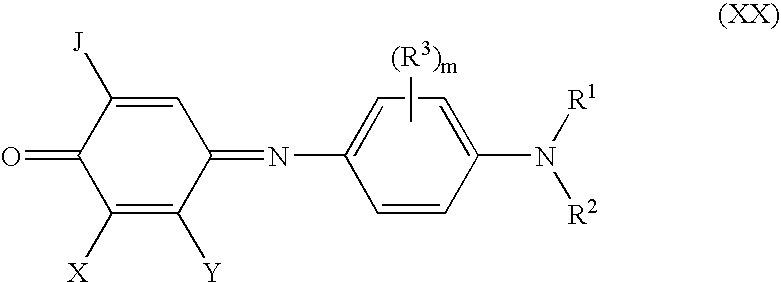Extrudable antistatic tielayers
a tie layer and anti-static technology, applied in thermography, instruments, photosensitive materials, etc., can solve the problems of not mentioning the importance of printing, lack of significant humidity sensitivity of the tie layer composition, etc., to achieve the effect of improving adhesion
- Summary
- Abstract
- Description
- Claims
- Application Information
AI Technical Summary
Benefits of technology
Problems solved by technology
Method used
Image
Examples
example 1
Humidity Sensitive Control
[0109]The tie layer was created using melt compounding. It consisted of compounding or melt mixing polyether-polyolefin antistatic material from Sanyo Chemical Co., PELESTAT® 300 and Huntsman P4G2Z-159 polypropylene homopolymer in a 70:30 ratio at about 240° C. Prior to compounding PELESTAT® 300 was dried at 77° C. for 24 hours in Novatech dryers. The polymer was then forced through a strand die into a 20° C. water bath and pelletized. The compounded tie layer pellets were then dried again at 77° C. for 24 hours in a Novatech dryer and conveyed using dessicated air to the extruder. The tie layer was melted in the extruder such that it exited the extruder at a temperature around 232° C. See Examples 1 and 3 of U.S. Patent Publication No. 2004 / 0167020). The ratio of DRL to tie layer thickness was 2:1.
example 2
Invention
[0110]The tie layer was created using melt compounding. It consisted of melt mixing 20 wt. % PELESTAT® 230 polyether-polyolefin antistatic material from Sanyo Chemical Co., and 80 wt. % Eastman chemical SP2207 ethylene methylacrylate copolymer at about 240° C.
[0111]Prior to compounding PELESTAT® 230 was dried at 77° C. for 24 hours in Novatech dryers. The polymer was then forced through a strand die into a 20° C. water bath and pelletized. The compounded tie layer pellets were then dried again at 43.3° C. for 8 hours in a Novatech dryer and conveyed using dessicated air to the extruder. The tie layer was melted in the extruder such that it exited the extruder at a temperature around 265° C. The ratio of DRL to tie layer thickness was 3:1.
example 3
Invention
[0112]The tie layer was created using melt compounding. It consisted of melt mixing 20 wt. % PELESTAT® 230 polyether-polyolefin antistatic material from Sanyo Chemical Co., 75 wt. % Dow chemical Amplify EA102 ethylene ethylacrylate copolymer and 5 wt. % Basell Pro-fax PDC1292 a homopolymer polypropylene at about 240° C.
[0113]Prior to compounding PELESTAT® 230 was dried at 77° C. for 24 hours in Novatech dryers. The polymer was then forced through a strand die into a 20° C. water bath and pelletized. The compounded tie layer pellets were then dried again at 43.3° C. for 8 hours in a Novatech dryer and conveyed using dessicated air to the extruder. The tie layer was melted in the extruder such that it exited the extruder at a temperature around 265° C. The ratio of DRL to tie layer thickness was 1.5:1.
PUM
| Property | Measurement | Unit |
|---|---|---|
| RH | aaaaa | aaaaa |
| thickness | aaaaa | aaaaa |
| Vicat temperature | aaaaa | aaaaa |
Abstract
Description
Claims
Application Information
 Login to View More
Login to View More - R&D
- Intellectual Property
- Life Sciences
- Materials
- Tech Scout
- Unparalleled Data Quality
- Higher Quality Content
- 60% Fewer Hallucinations
Browse by: Latest US Patents, China's latest patents, Technical Efficacy Thesaurus, Application Domain, Technology Topic, Popular Technical Reports.
© 2025 PatSnap. All rights reserved.Legal|Privacy policy|Modern Slavery Act Transparency Statement|Sitemap|About US| Contact US: help@patsnap.com



